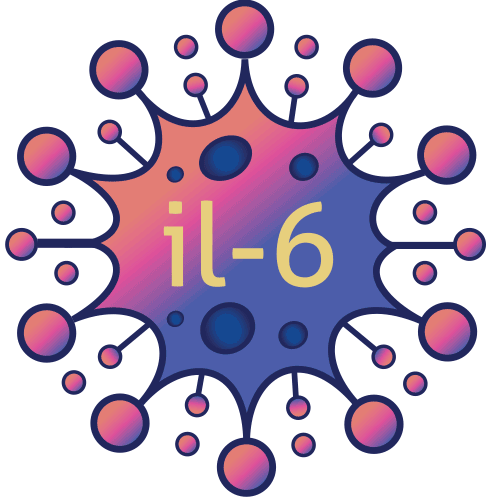When Will I Feel Better?
- From The Mind of AI

- Nov 17, 2024
- 4 min read
Updated: Nov 23, 2024

Influencing Factors on IL-6 Reduction or When Will You Feel Better
Factor | Details |
Severity of Inflammation | - Temporary Inflammation: IL-6 levels often spike temporarily in response to infections, injuries, or acute stress, serving as a defense mechanism. Once the infection or injury is resolved, IL-6 typically declines within a few days to weeks. For example, IL-6 may peak during a flu or viral infection and gradually reduce as the body recovers. - Chronic Inflammation: Conditions like autoimmune disorders, obesity, or metabolic syndrome lead to persistently elevated IL-6 due to ongoing inflammation. Lowering IL-6 in these cases often requires a long-term approach, with measurable reductions taking weeks to months, as inflammation is more deeply embedded and may require continuous lifestyle, dietary, and medical interventions. |
Diet and Lifestyle Changes | - Anti-Inflammatory Diet & Exercise: Research suggests that an anti-inflammatory diet rich in fruits, vegetables, whole grains, lean proteins, and healthy fats (such as omega-3s from fish) can help lower IL-6 levels within weeks. Moderate exercise (such as walking, cycling, or swimming) also reduces IL-6, with studies showing positive effects in as little as 4–6 weeks. Together, these changes create a balanced and sustainable approach to reducing IL-6. - Stress Reduction: Chronic stress is known to elevate IL-6, contributing to a cycle of inflammation. Incorporating relaxation techniques like deep breathing exercises, meditation, yoga, and mindfulness practices can start to lower IL-6 over several weeks. Consistency is key, as the stress-inflammation link can be strong, and long-term stress management may take months for significant IL-6 reduction. |
Supplementation | - NAD+ & Omega-3 Fatty Acids: These supplements, known for their anti-inflammatory and cellular repair properties, begin reducing IL-6 with regular use. For example, omega-3s from fish oil are effective in lowering IL-6 due to their impact on inflammation pathways. Consistent use for 2–3 months may yield notable benefits for overall inflammation reduction and cognitive function. - Curcumin & Resveratrol: These compounds are powerful antioxidants with strong anti-inflammatory properties. Curcumin, for instance, has been shown to lower IL-6 levels within 4–8 weeks. Resveratrol, found in grapes and blueberries, similarly reduces IL-6 and may be particularly helpful in chronic inflammation cases. For best results, choose supplements with enhanced bioavailability (such as curcumin combined with piperine). |
Underlying Conditions | - Chronic Conditions: Conditions like autoimmune diseases (e.g., rheumatoid arthritis), obesity, and chronic infections are often linked to persistent IL-6 elevation. Since the inflammation is deeply rooted, it typically takes longer to respond to IL-6-lowering strategies. For individuals with these conditions, integrating anti-inflammatory diets, supplements, exercise, and stress management consistently over several months is often necessary before seeing substantial reductions in IL-6. |
General Timeline for IL-6 Reduction
Type of Inflammation | Expected Timeline for IL-6 Reduction |
Acute Inflammation | - Timeline: IL-6 levels usually begin to decline within days to weeks once the acute cause of inflammation (like an infection or injury) is resolved. - What to Expect: Acute inflammation, such as that caused by minor illnesses or injuries, is generally short-lived. Once the body has healed, IL-6 levels naturally taper off as the immune response settles. Individuals may feel noticeable relief in symptoms as inflammation decreases relatively quickly, sometimes within a week or two. |
Chronic Inflammation | - Timeline: For chronic conditions (e.g., autoimmune diseases, chronic infections, metabolic syndrome), it typically takes weeks to months of ongoing interventions (diet, exercise, supplements) to reduce IL-6 levels significantly. - What to Expect: Chronic inflammation may show subtle improvements initially, but over 2–3 months of consistent lifestyle and dietary changes, individuals often experience noticeable symptom relief and a reduction in inflammation markers, including IL-6. Blood tests can confirm these changes over time. |
Lifestyle Changes | - Timeline: Research suggests that consistent dietary and lifestyle interventions take about 4–12 weeks to produce meaningful reductions in IL-6 and other inflammatory markers. - What to Expect: People may notice gradual improvements in mood, energy, sleep, and physical well-being as inflammation begins to lower. Those who maintain these healthy habits over the long term tend to see sustained reductions in IL-6 and reduced risks of inflammation-related conditions. |
What to Expect Over Time:
First Few Weeks: Small changes may begin to occur as inflammation-triggering factors (such as acute stress or infections) are resolved and anti-inflammatory habits (like diet, exercise, and supplementation) are established. Individuals may start to notice minor improvements in mood, energy, and overall well-being.
1–3 Months: For most people, this is when the most noticeable benefits begin to emerge. Consistent dietary and lifestyle changes, along with targeted supplementation, typically start to lower IL-6 levels significantly. Blood tests or other health markers may confirm reductions in inflammation, while individuals experience fewer symptoms and enhanced health overall.
3 Months and Beyond: For those with chronic inflammation or underlying conditions, significant improvements are often seen around this time with sustained efforts. Long-term commitment to an anti-inflammatory lifestyle can help maintain lower IL-6 levels, supporting better health, reduced disease risk, and a higher quality of life.
This expanded explanation offers a realistic timeline, emphasizing the importance of consistency and patience, and helps people understand what they might experience at each stage. Let me know if there’s anything more you’d like to add!




Comments